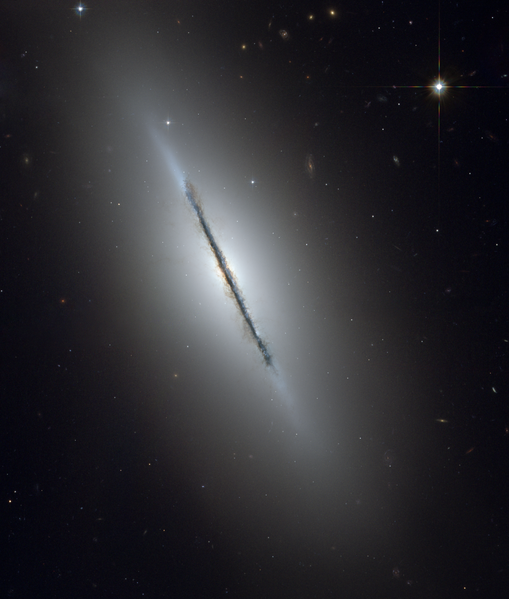Imachen:Ngc5866 hst big.png

Grandaria d'ista previsualización: 509 × 599 pixels. Atras resolucions: 204 × 240 pixels | 408 × 480 pixels | 652 × 768 pixels | 870 × 1024 pixels | 1739 × 2048 pixels | 3190 × 3756 pixels.
Fichero orichinal (3190 × 3756 píxels; grandaria d'o fichero: 25,78 MB; tipo MIME: image/png)
Historial d'o fichero
Punche en una calendata/hora ta veyer o fichero como amaneixeba por ixas envueltas.
| Calendata/Hora | Miniatura | Dimensions | Usuario | Comentario | |
|---|---|---|---|---|---|
| actual | 18:38 16 feb 2009 |  | 3190 × 3756 (25,78 MB) | Spencer | {{Information |Description={{en|1=From original NASA press release: :This is a unique view of the disk galaxy en:NGC 5866 tilted nearly edge-on to our line-of-sight. Hubble's sharp vision reveals a crisp dust lane dividing |
Uso d'o fichero
A pachina siguient emplega iste fichero:
Uso de fichers globals
Os siguients wikis fan servir iste fichero:
- Uso en ab.wikipedia.org
- Uso en ace.wikipedia.org
- Uso en af.wikipedia.org
- Uso en af.wikibooks.org
- Uso en af.wikiquote.org
- Uso en af.wiktionary.org
- Uso en ak.wikipedia.org
- Uso en als.wikipedia.org
- Uso en am.wikipedia.org
- Uso en am.wiktionary.org
- Uso en ang.wikipedia.org
- Uso en ang.wiktionary.org
- Uso en an.wiktionary.org
- Uso en arc.wikipedia.org
- Uso en ar.wikipedia.org
- Uso en ar.wikibooks.org
- Uso en ar.wikinews.org
- Uso en ar.wikiquote.org
- Uso en ar.wikisource.org
- Uso en ar.wikiversity.org
- Uso en ar.wiktionary.org
- Uso en arz.wikipedia.org
- Uso en ast.wikipedia.org
- Uso en ast.wiktionary.org
- Uso en as.wikipedia.org
- Uso en av.wikipedia.org
- Uso en ay.wikipedia.org
- Uso en ay.wiktionary.org
- Uso en az.wikipedia.org
- Uso en az.wikibooks.org
- Uso en az.wikiquote.org
- Uso en az.wikisource.org
- Uso en az.wiktionary.org
- Uso en bat-smg.wikipedia.org
- Uso en ba.wikipedia.org
- Uso en bcl.wikipedia.org
- Uso en be-tarask.wikipedia.org
- Uso en beta.wikiversity.org
- Uso en be.wikipedia.org
- Uso en be.wikibooks.org
- Uso en be.wikiquote.org
Veyer mas información sobre l'uso global d'iste fichero.

